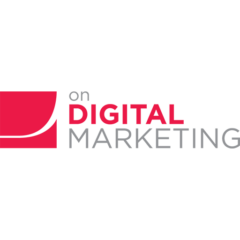What do you think of this email subject line?
“I will be outspent.”
It’s indeed a peculiar one, but what’s really fascinating about it is that it’s one of the best-performing subject lines that drove funding for President Obama’s successful re-election campaign.
The subject line was among 13 enigmatic headlines that piqued curiosity among readers, resulting in increased email open rates, read-throughs, and conversions.
Was it made on a hunch? Not at all. It was the result of incessant testing that revealed how novelty in emails wears off and one needs variety to keep them exciting.
It’s insightful ideas like these that got us excited at OnDigitalMarketing about powerful email campaigns. Since 2012, we’ve been educating marketers and entrepreneurs on email best practices, including knowing your audience, timing, and compelling content.
We’ve gathered more information on these best practices, and as we delve into them, you’ll learn:
- How knowing your audience helps you craft engaging content
- How to adhere to email standards
- Why your timing affects your email open rates
- How to create engaging content and how A/B tests help
- How to conduct tracking and analysis using performance indicators
1 – Know Your Audience
Email campaigns are one of the most effective and widely-used digital marketing strategies by businesses today.
However, a powerful campaign needs more than just flooding your subscriber list. You need to truly understand your audience and offer value by catering to their individual needs.
From your subject line and introductions to the actual content, your audience needs to get the sense that you’re addressing their problems specifically, and offer solutions or insights that make reading your email worthwhile.
“The aim of marketing is to know and understand the customer so well, the product and service fits him and sells itself.”
— Peter F. Drucker
So, how do you go about creating this sense? Netflix has an idea we can learn from.
Amidst the recent explosion of streaming services, Netflix realized that they needed to do more to stand out. A simple, “Top movies to watch this week,” in their email subject lines just wasn’t enough.
They needed a more convincing way of sounding like they understood their audience’s problem of sifting through endless content to find that binge-worthy show. They needed a more targeted approach based on their subscriber profiles.
This insight inspired Netflix’s shift to hyper–targeted email campaigns guided by one unifying philosophy of, “Let the subscribers experience the customer journey differently.”
Under this strategy, their emails featured segmentation subject lines such as, “Viewers who liked this show also watched… ” and “Top picks for you.”
From these subject lines alone, you get the sense that Netflix is trying to help you find the perfect show specifically for your demographic and interests. This makes the emails more compelling and significantly enhances their open rates.
The emails also featured personalization elements such as subscriber names and the use of a second-person voice, which allowed a deeper level of engagement for readers and helped to build trust.
The following video by Seth Godwin explains how you can find your audience and win their trust.
Expert Tip: Emails with personalized subject lines are 26 percent more likely to be opened, and those with personalized content have a 29 percent higher unique open rate.
2 – Follow Email Standards
You’re probably wondering, “Don’t I need to stand out?” And you’re right, but within the limits of email standards, such as the CAN-SPAM Act. Adhering to these directives will help you avoid the disheartening spam folder and blocked list and keep you from violating the law.
They also help you achieve email optimization and deliverability by creating a positive user experience for your target audience that leads to brand recognition and trust.
Therefore, your emails will need to feature the following:
- Clear Identification of Advertisement: You must let your audience know that your email is of a promotional nature to inform any decision they make as a result of your content. This creates transparency for your brand in the minds of your audience.
- Conspicuous Opt-Out Mechanism: You must include a clear way of unsubscribing from your emails. This prevents the negative associations of harassment while giving you the ability to review your email engagement levels and improve.
- Prompt Processing of Opt-Out Requests: You must provide quick unsubscriptions upon request. This demonstrates your respect for your subscribers’ preferences and helps you maintain a positive brand image.
- Truthful Email Subject Lines: Your subject lines must accurately reflect your email content to avoid duping your readers into opening your emails under false pretenses. This helps you build trust with your audience and enhances open rates.
The resulting trust and positive brand image of compiling with the above standards will optimize your email outreach and help with your subscriber list growth.
Bonus Idea: Utilize marketing automation to streamline your email campaigns and ensure compliance with email standards for improved deliverability and engagement.
3 – Your Timing Matters
Is there a perfect time to send a promo email, and does the day of the week matter?
The answer is, yes, but it also depends. Timing is another aspect of personalization that influences email deliverability, but it’s also subject to your audience.
Take a look at this marketing email from Harpoon Brewery:
Happy Birthday, Carly!
May your day be filled with birthday wishes and (most importantly) your fridge full of Harpoon beer! Happy birthday from all of us at Harpoon Brewery.
It’s an excellent example of perfect timing (right on Carly’s birthday) and a demonstration of how timing is a crucial part of email personalization. As such, it’s highly engaging and likely to get a read from Carly.
Even so, there are general rules of thumb regarding timing to keep in mind and help you achieve email optimization:
There is a general weekly pattern for emails and their open rates. Monday is a tough day for emails with readers going through a wave of emails from over the weekend. Your chances of read-throughs are modest due to the backlog.
Tuesdays are the best days for emails with open rates at 18.3 percent. Your subscribers are recovered from the weekend by then with Monday serving as their transition back into work mode.
Going deeper than the day of the week, the hours with the best average open rates are between 8:00 AM–12:00 PM. These times are generally the start of most work shifts and it’s a common routine to check your email at the start of your day.
So, as a rule of thumb, the prime time for sending emails is typically on Tuesdays between the hours of 8:00 AM and 12:00 PM.
The good news is that automation allows you to schedule your emails according to this pattern and factor in personalization aspects such as birthdays and other special days. This optimizes your email marketing for better open rates and enhances engagement for more read-throughs.
You also need to consider the frequency of your emails. Even the best day and timing won’t be effective if your subscribers feel inundated with emails. They will likely ignore them or worse, unsubscribe.
On the other hand, too few emails won’t be effective at creating awareness for your brand and generating interest in your products.
Expert Tip: To find the perfect balance for your audience, conduct an A/B test on frequency and use the resulting email metrics for insight.
The table below highlights different types of emails across five industries and their recommended frequency.
| Industry | Type Of Emails | Recommended Frequency |
| E-commerce | Promotional | Once a week |
| Transactional | Immediately or within 24 hours | |
| Newsletter | Once every two weeks | |
| Abandoned cart | Within 24 hours and a reminder after 48 hours | |
| Hospitality | Booking confirmation | Immediately |
| Pre-arrival | Once, 3–5 days before arrival | |
| Post-stay feedback | Once, 24–48 hours after check-out | |
| Special offers | Once a month during non-peak seasons | |
| Technology | Product updates | Once every two weeks |
| New feature releases | Once a month | |
| Webinar invitations | Once every two weeks | |
| Support and troubleshooting | Within 24 hours | |
| Health and Wellness | Health tips | Once a week |
| Newsletter | Once a month | |
| Event invitations | Once every two months | |
| New service offerings | Once every three months | |
| Finance | Account updates | As needed |
| Statement notifications | Once a month | |
| Financial tips | Once every two weeks | |
| Personalized offers | Once every three months |
4 – Deliver Compelling Content

Compelling content is at the heart of powerful email campaigns. It’s the only way to generate read-throughs in today’s distracted society and drive conversions.
Your email content needs to be well-written and feature engaging elements such as captivating images and videos as well as personalization.
Netflix’s approach to compelling email content is a classic example of this strategy with its dynamic use of landing cards—high-quality images of their most popular shows.
Beyond inviting and personalized subject lines such as, “Enjoy Netflix Again,” the emails feature landing cards from top trending shows. And what’s really exciting is that the images are different for every subscriber as they’re based on insights into their tastes and preferences.
This curated approach combines the power of visual stimulation and personalization to realize remarkably compelling email content that’s sure to get read-throughs and conversions.
Another important consideration for compelling content is viewing optimization, where your emails display perfectly over various devices with different screen sizes.
All that effort of incorporating visuals, personalization, and fantastic writing won’t matter if the emails appear awkwardly on some devices.
Tip: Prioritize personalization, segmentation, and optimized design to increase engagement and response rates for your email marketing campaigns.
5 – Track and Analyze Your Results

“Without big data analytics, companies are blind and deaf, wandering out onto the web like deer on a freeway.”
— Geoffrey Moore
What are your average open rates and dwell times for emails? How many conversions do you get per 1,000 emails?
If you can’t answer these questions objectively, your email campaign is at risk of missing the mark for deliverability and business growth.
Email analytics help you track key performance indicators, such as open rates, dwell time, and opt-out rates, enabling you to identify improvement points and make changes—for instance, tweaking your layout and subject lines to enhance the overall engagement of your emails.
Case in point, Voices.com recently evaluated their 50,000 monthly drip emails by organizing screenshots of what their emails look like in one document.
Immediately, it was apparent that the sequence was out of order and a major drawback for engagement levels. The review also highlighted the generic nature of a [email protected] sender email address and its tendency to be overlooked.
This was the first change: moving from the generic email address to a more personal “Customer Experience Manager Silvana Cordoba.” This switch alone improved the average open rate by 4.93 percent.
The other change was correcting the order of emails and in some instances, cutting out entire messages to minimize email frequency and maximize the value of each post.
Without this analysis, Voice.com wouldn’t have noticed the impact on engagement from a generic sender address and disordered emails. As such, they wouldn’t have experienced a significant increase in their open rates.
That said, A/B tests offer plenty of insights for your emails with regard to subject lines, calls-to-action, and content. Simply test different variations of these elements to find what resonates with your audience and maximize your return on investment (ROI).
Were they any changes to your key performance indicators with different versions of subject lines, calls-to-actions, and content? What are the analytical conclusions based on the implemented changes?
The table below showcases the performance of different email campaigns, presenting key metrics such as subscriber list growth, email deliverability, click-through rates, conversions, and open rates.
| Campaign | Subscriber Growth List | Email Deliverability | Click-Through Rates | Conversions | Open Rates |
| Campaign 1 | 500 | 95 percent | 10 percent | 25 | 20 percent |
| Campaign 2 | 750 | 92 percent | 8 percent | 18 | 18 percent |
| Campaign 3 | 1000 | 96 percent | 12 percent | 30 | 22 percent |
| Campaign 4 | 400 | 91 percent | 6 percent | 15 | 16 percent |
| Campaign 5 | 600 | 94 percent | 9 percent | 20 | 19 percent |
Learn About Creating Powerful Email Campaigns and More From OnDigitalMarketing
So, there are five email best practices to inspire your campaign.
And there are plenty more insightful ideas to explore with OnDigitalMarketing.
From user empathy, to SEO and digital strategy, to social media execution, our College Textbook will guide you in making smart decisions and grow your brand.
The coursework mixes the practical day-to-day challenges of building a successful online brand with a groundwork theory in marketing.Feel free to drop us a line to learn more about our program and don’t forget to sign up for monthly pro tips, toolkits, and curated news.
